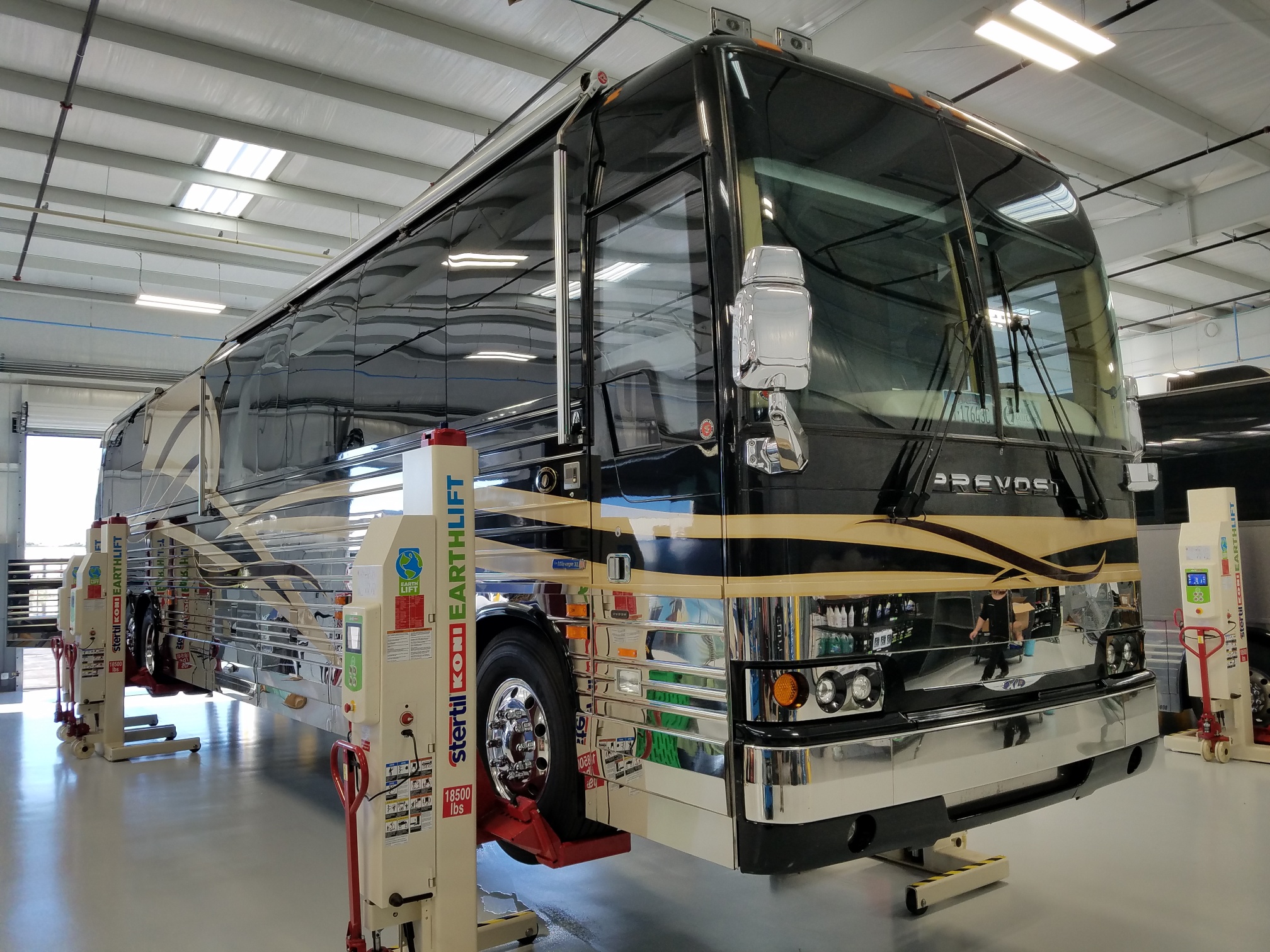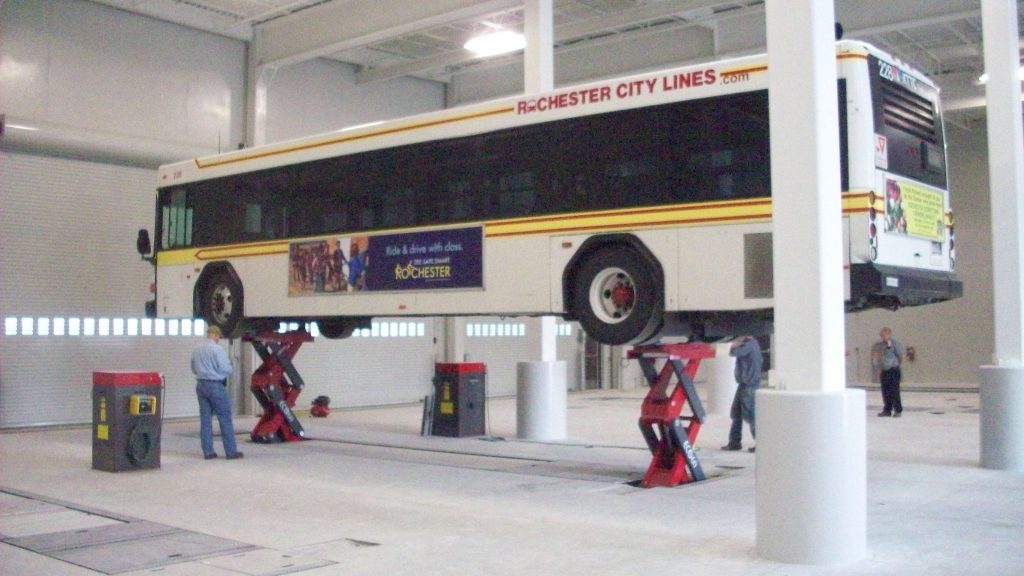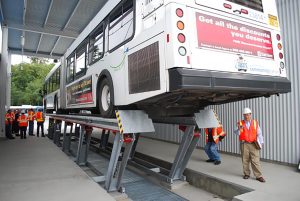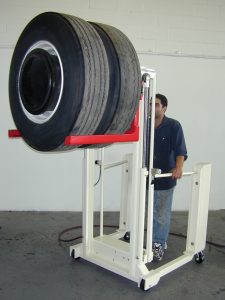
Following a review of bus maintenance facilities across North America, combined with heightened service demands resulting from an increase in the severity of recent weather events, heavy duty vehicle lift leader Stertil-Koni recommends 10 top wintertime tips to improve safety on the shop floor.

“With the cold winter months here and weather conditions shifting at a record pace, now is the time to engage in preventative maintenance (PM) strategies,” noted Peter Bowers, technical sales support manager at Stertil-Koni, known for its bus lifts and truck lifts. “The advantages are compelling, especially in the form of heightened shop safety, prolonged vehicle life, reduced failures and breakdowns, and sustained maximum vehicle uptime.”
The need is pressing.

With so much riding on commercial and municipal buses and the maintenance personnel that service them, Stertil-Koni developed 10 top tips for the safe operation of heavy duty vehicle lifts:
- Certification is Significant – Utilize lifts certified by the Automotive Lift Institute (ALI). The ANSI/ALI ALCTV is the standard for automotive lifts. This lift certification program makes it easy for buyers to choose lifts that meet all safety requirements for construction, testing, and validation. The ALI gold label is the only guarantee that a lift has been independently proven to meet stringent industry standards.
- Lift Choice and Capacity – Know in advance the weight of the heaviest vehicle to be lifted and make certain that the lift selected is certified to meet or exceed that capacity. Also, confirm the height of the vehicle is appropriate for your shop’s ceiling height.
- Learn the Lift – Well-trained lift operators should understand the lift’s use and abilities before powering up. Proper training ensures safe and efficient operation and prepares the operator for any emergencies. Keep a copy of the manufacturer’s lift manual nearby at all times.
- Safety First – During lift setup check the perimeter of the lift to confirm nothing is obstructing its path, and there are no hazards in the area. Lift the vehicle no more than 12 inches off the ground, pause, and do another sweep to check further that there are no impediments.
- Stability is Key – Always place lifts on a firm foundation and level ground. This is especially important with Mobile Column Lifts – as they can be easily relocated both inside and outside of the maintenance shop. When outside, check for wind loads. Further, select a lift with an “electronic synchronization” system. As the lift goes into motion and continues through the full-range up to its maximum height, vehicles should rise smoothly, even those with unequal weight distribution. Assure that the lifted vehicle itself is level.
- Proper Lifting Points – At all times use designated lifting points on the vehicle. For inground lifts, operators should check that the contact points are appropriately positioned.
- Technician Protection – Lift vehicles to a proper height so technicians can move about freely, safely and comfortably underneath the vehicle. Verify that lifts are locked in position before standing under the bus.
- Schedule Lift Maintenance – Make sure lifts receive annual inspections by a certified ALI lift inspector. Also, use factory or manufacturer-authorized technicians to service and repair your lifts.
- Culture of Safety – Publicly and prominently post service bulletins, safety messages, and continuously update the skills of all technicians.

A high lift wheel dolly allows wheel removal and adequate alignment of dual tire assemblies and brake drums to be completed efficiently and accurately. - Accessorize your Lift – Utilize lift accessories specifically designed to help ensure operator safety and proper ergonomics. One example is a high lift wheel dolly, allowing wheel removal and adequate alignment of dual tire assemblies and brake drums to be completed efficiently and accurately, without back strain.
In conclusion, noted Dr. Jean DellAmore, Stertil-Koni USA president, “Safety is always mission No. 1 in the bus service bay. That’s why we suggest using a well-planned safety-first approach so that shop techs can perform their duties efficiently, ergonomically and with complete confidence. This creates a positive workplace atmosphere, improves worker retention and contributes to the greater longevity of the buses being serviced and the equipment techs operate.”
See below for more educational resources from Stertil-Koni:
Product Information:
Case Studies:
- Major Texas Transit System, CARTS, Turns to Stertil-Koni Vehicle Lifts for New Vehicle Maintenance Facility
- Stertil-Koni Heavy Duty Vehicle Lifts Selected by LANta for Recently Completed Modern Fleet Maintenance Facility
Videos:
